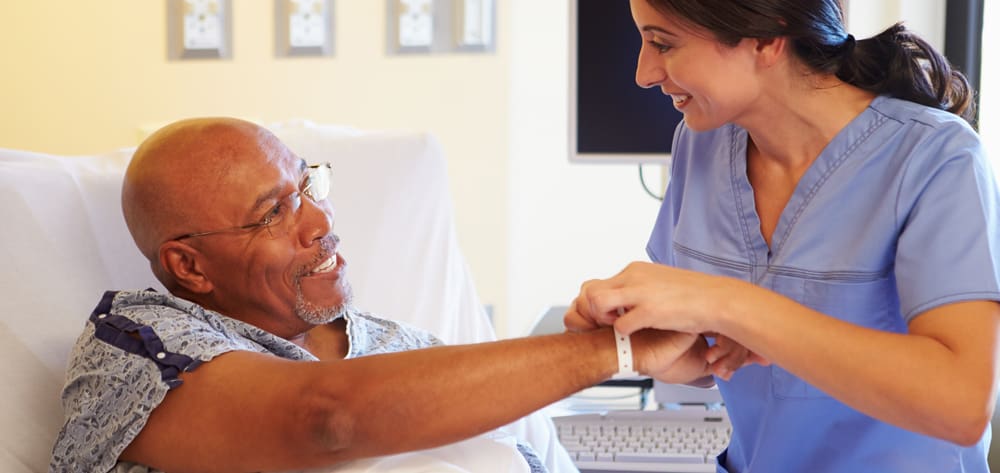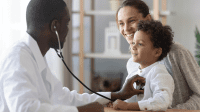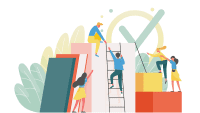A critical care nurse tries to catch up with her morning medications after her patient’s condition changes and he requires several procedures. He is intubated, so she decides to crush the pills and instill them into his nasogastric (NG) tube. In her haste to give the already-late medications, she fails to notice the “Do not crush” warning on the electronic medication administration record. She crushes an extended-release calcium channel blocker and administers it through the NG tube. An hour later, the patient’s heart rate slows to asystole, and he dies…
A patient returns from surgery, anxious and in pain, with several I.V. lines and an intracranial pressure (ICP) monitor in place. The I.V. tubing used in the operating room differs from the tubing used in the intensive care unit (ICU). In her haste, the ICU nurse prepares to inject morphine into the patient’s ICP drain, which she has mistaken for the central line. She stops just in time when she realizes she’s about to make a serious mistake…
A physician writes an order for primidone (Mysoline) for a 12-year old boy with a seizure disorder. Misreading the physician’s handwriting, the pharmacist mistakenly fills the order with prednisone. For 4 months, the boy receives prednisone along with his seizure medications, causing steroid-induced diabetes. The diabetes goes unrecognized, and he dies from diabetic ketoacidosis…
Medication errors like these can happen in any healthcare setting. According to the landmark 2006 report “Preventing Medication Errors” from the Institute of Medicine, these errors injure 1.5 million Americans each year and cost $3.5 billion in lost productivity, wages, and additional medical expenses. (See Sobering statistics by clicking the PDF icon above.)
Proper documentation protects patients and your license
Promoting professional accountability and ownership
Preventing high-alert medication errors in hospital patients
Medication administration is a complex multistep process that encompasses prescribing, transcribing, dispensing, and administering drugs and monitoring patient response. An error can happen at any step. Although many errors arise at the prescribing stage, some are intercepted by pharmacists, nurses, or other staff.
Administration errors account for 26% to 32% of total medication errors—and nurses administer most medications. Unfortunately, most administration errors aren’t intercepted. Recent technological advances have focused on reducing errors during administration.
Ten key elements of medication use
Many factors can lead to medication errors. The Institute for Safe Medication Practices (ISMP) has identified 10 key elements with the greatest influence on medication use, noting that weaknesses in these can lead to medication errors. They are:
- patient information
- drug information
- adequate communication
- drug packaging, labeling, and nomenclature
- medication storage, stock, standardization, and distribution
- drug device acquisition, use, and monitoring
- environmental factors
- staff education and competency
- patient education
- quality processes and risk management.
Patient information
Accurate demographic information (the “right patient”) is the first of the “five rights” of medication administration. Required patient information includes name, age, birth date, weight, allergies, diagnosis, current lab results, and vital signs.
Barcode scanning of the patient’s armband to confirm identity can reduce medication errors related to patient information. But initially, barcode technology increases medication administration times, which may lead nursing staff to use potentially dangerous “workarounds” that bypass this safety system. Also, the barcode method isn’t fail proof; the patient’s armband may be missing or may fail to scan, or the scanner’s battery may fail.
Drug information
Accurate and current drug information must be readily available to all caregivers. This information can come from protocols, text references, order sets, computerized drug information systems, medication administration records, and patient profiles.
Adequate communication
Many medication errors stem from miscommunication among physicians, pharmacists, and nurses. Communication barriers should be eliminated and drug information should always be verified. One way to promote effective communication among team members is to use the “SBAR” method (situation, background, assessment, and recommendations).
Poor communication accounts for more than 60% of the root causes of sentinel events reported to the Joint Commission (JC). In a 2001 case, a patient died after labetalol, hydralazine, and extended-release nifedipine were crushed and given by NG tube. (Crushing extended-release medications allows immediate absorption of the entire dosage.) As a result, the patient experienced profound bradycardia and hypotension leading to cardiac arrest. Although she was successfully resuscitated, she received the drugs the same way the next day. Clinicians had failed to communicate to other team members that her initial cardiac arrest had occurred shortly after she’d received the medications improperly.
Drug packaging, labeling, and nomenclature
Healthcare organizations should ensure that all medications are provided in clearly labeled unit-dose packages for institutional use. Packaging for many drugs looks similar. A tragic case stemming from such similarity occurred with heparin (one of the drugs on the JC’s “high-alert” list, meaning it has a high potential for causing patient harm). A few years ago, several pediatric patients received massive heparin overdoses due to misleading packaging and labeling; three infants died. As a result, the Food and Drug Administration and Baxter Healthcare (the heparin manufacturer) issued a letter via the MedWatch program alerting clinicians to the danger posed by similarly packaged drugs. Baxter has since enhanced the labels on heparin and some other high-alert drugs; it now uses a 20% larger font size, tear-off cautionary labels, and different colors to distinguish differing drug dosages.
Look-alike or sound-alike medications—products that can be confused because their names look alike or sound alike—also are a source of errors. From 2003 to 2006, 25,530 such errors were reported to the Medication Errors Reporting Program (operated jointly by the U.S. Pharmacopeia and ISMP) and MEDMARX (an adverse drug event database). The JC requires healthcare institutions to identify look-alike and sound-alike drugs each year and have a process in place to help ensure related errors don’t occur.
Medication storage, stock, standardization, and distribution
 Many experienced nurses remember when critical care units kept a medication “stash,” which frequently caused duplication errors. Potentially, many errors could be prevented by decreasing availability of floor-stock medications, restricting access to high-alert drugs, and distributing new medications from the pharmacy in a timely manner.
Many experienced nurses remember when critical care units kept a medication “stash,” which frequently caused duplication errors. Potentially, many errors could be prevented by decreasing availability of floor-stock medications, restricting access to high-alert drugs, and distributing new medications from the pharmacy in a timely manner.
Also, hospitals can use commercially available products to decrease the need for I.V. compounding medications and I.V. admixing. Use of preprinted order sets and standardized formularies can reduce errors, too. The Institute for Healthcare Improvement recommends standardized order sets and preprinted protocols for 75% of the drugs healthcare facilities use. These orders and protocols help clinicians promptly select correct dosing regimens, routes, and parameters while eliminating ambiguous abbreviations and the risk of misreading a prescriber’s handwriting.
However, errors can occur even when automated dispensing cabinets are stocked by technicians. In a recent error reported to the ISMP, a technician filled an automated dispensing cabinet with the wrong concentration of a premixed potassium chloride I.V. solution.
Drug device acquisition, use,and monitoring
Improper acquisition, use, and monitoring of drug delivery devices may lead to medication errors. Some delivery systems have inherent flaws that increase the error risk. For example, at one time, I.V. medication tubing continued to flow or infuse when removed from the pump. Thus, patients could receive boluses of medications or I.V. solutions, which sometimes had deleterious outcomes. During the admission process, for instance, a patient receiving nitroprusside could receive a large infusion of this drug when the I.V. tubing was removed from the pump and the patient was transferred from one bed to another. This design flaw has since been resolved. In addition, syringes for administering oral medications should not be compatible with I.V. tubing.
Environmental factors
Environmental factors that can promote medication errors include inadequate lighting, cluttered work environments, increased patient acuity, distractions during drug preparation or administration, and caregiver fatigue. (See The fatigue factor by clicking on the PDF icon above.)
Distractions and interruptions can disrupt the clinician’s focus, leading to serious mistakes. To reduce interruptions, Sentara Leigh Hospital in Norfolk, Virginia has instituted a “no interruption” zone around the automated medication dispensing machines; coworkers know not to interrupt a nurse who’s obtaining medication from the machine.
Heavier workloads also are associated with medication errors. The nursing shortage has increased workloads by increasing the number of patients for which a nurse is responsible. Also, nurses perform many tasks that take them away from the patient’s bedside, such as answering the telephone, cleaning patients’ rooms, and delivering meal trays. Absence of nurses from the bedside is directly linked to compromised patient care.
Staff education and competency
Continuing education of the nursing staff can help reduce medication errors. Medications that are new to the facility should receive high teaching priority. Staff should receive updates on both internal and external medication errors, as an error that has occurred at one facility is likely to occur at another. (The heparin overdoses described earlier happened at multiple institutions.)
As medication-related policies, procedures, and protocols are updated, this information should be made readily available to staff members. Also, nurses can attend pharmacy grand rounds. Some facilities now use nursing grand rounds as a way to keep staff members competent.
Patient education
Caregivers should teach patients the name of each medication they’re taking, how to take it, the dosage, potential adverse effects and interactions, what it looks like, and what it’s being used to treat.
Quality processes and risk management
A final strategy for reducing medication errors is to establish adequate quality processes and risk-management strategies. Every facility should have a culture of safety that encourages discussion of medication errors and near-misses (errors that don’t reach a patient) in a nonpunitive fashion. Only then can effective systems-based solutions be identified and used.
Simple redundancies, such as using an independent double-check system when giving high-alert drugs, can catch and correct errors before they reach patients. According to the Institute of Medicine, organizations with a strong culture of safety are those that encourage all employees to stay vigilant for unusual events or processes.
Consequences for the nurse
For a nurse who makes a medication error, consequences may include disciplinary action by the state board of nursing, job dismissal, mental anguish, and possible civil or criminal charges. In one study of fatal medication errors made by healthcare providers, the providers reported they felt immobilized, nervous, fearful, guilty, and anxious. Many experienced insomnia and loss of self-confidence.
Avoiding medication errors
How can you safeguard your practice from medication errors? For starters, be conscientious about performing the “five rights” of medication administration every time—right patient (using two identifiers), right drug, right dosage, right time, and right route. Some experts have expanded this list to include:
- right reason for the drug
- right documentation
- right to refuse medication
- right evaluation and monitoring
Be sure to use the safety resources available at your facility. Don’t use workarounds to bypass safety systems. In a 2008 study, one-third of nurses reported they sometimes bypass safety systems. Nurses working in critical care and pediatrics were more likely to do this; yet medication errors in these settings can be particularly devastating. Where nurses routinely bypass safety systems and create workarounds, the employer must conduct a root-cause analysis to identify the reason for the workaround, and take action to correct the situation and prevent recurrences.
Additional steps you can take to promote safe medication use include:
- reading back and verifying medication orders given verbally or over the phone. (See Reading back medication orders by clicking on the PDF icon above.)
- asking a colleague to double-check your medications when giving high-alert drugs
- using an oral syringe to administer oral or NG medications
- assessing patients for drug allergies before giving new medications
- becoming familiar with your facility’s “do not use” list of abbreviations. In 2004, the JC published a list of abbreviations that shouldn’t be used because they can contribute to medication errors. For instance, in one documented case, a “naked” decimal point (one without a leading zero) led to a fatal tenfold overdose of morphine in a 9-month-old infant. The dosage was written as “.5 mg” and interpreted as “5 mg.”
Eliminating medication errors
Avoiding medication errors requires vigilance and the use of appropriate technology to help ensure proper procedures are followed. Computerized physician order entry reduces errors by identifying and alerting physicians to patient allergies or drug interactions, eliminating poorly handwritten prescriptions, and giving decision support regarding standardized dosing regimens.
The Leapfrog Group (whose mission is to trigger giant leaps forward in healthcare safety, quality, and affordability) supports computerized physician order entry as a way to reduce medication errors. Use of computerized physician order entry and barcodes may reduce errors by up to 50%.
Yet computerization can’t prevent or catch all errors. In one near-miss incident, an I.V. bag of a standardized diltiazem (Cardizem) solution (125 mg in 125 mL normal saline solution) was inadvertently labeled as an insulin drip, even though it had scanned correctly (the barcode had been applied by the pharmacy). Fortunately, an alert ICU nurse realized the bag she had in her hand was a premixed solution and not a pharmacy admixture. When she turned it over, she could see the manufacturer’s label.
Be sure to use the safety practices already in place in your facility. Eliminate distractions while preparing and administering medications. Learn as much as you can about the medications you administer and ways to avoid mistakes. (See Websites that can help you avoid medication errors by clicking on the PDF icon above.) Finally, be aware of the role fatigue can play in medication errors.
Selected references
Consumers Union. To Err is Human—To Delay is Deadly. May 2009. www.safepatientproject.org. Accessed February 1, 2010.
Institute for Safe Medication Practices. ISMP Medication Safety Alert! Nurse Advise-ERR [Newsletter]. www.ismp.org. Accessed February 1, 2010.
Hicks RW, Becker SC, Cousins DD. MEDMARX data report. A report on the relationship of drug names and medication errors in response to the Institute of Medicine’s call for action. Rockville, MD: Center for the Advancement of Patient Safety, U.S. Pharmacopeia; 2008.
Kohn LT, Corrigan JM, Donaldson MS, eds. To Err is Human: Building a Safer Health System. Washington, DC: National Academy Press; 2000.
Koppel R, Wetterneck T, Telles J, Karsh B. Workarounds to barcode medication administration systems: their occurrences, causes, and threats to patient safety. J Am Med Inform Assoc. 2008;15(4):408-423.
Rogers A, Hwang W, Scott L, Aiken L, Dinges D. The working hours of hospital staff nurses and patient safety. Health Aff (Millwood). 2004;23(4):202-212.
Sakowski J, Newman J, Dozier K. Severity of medication administration errors detected by a bar-code medication administration system. Am J Health Syst Pharm. 2008;65(17):1661-1666.
Visit www.AmericanNurseToday.com/archives for a complete list of selected references.
Pamela Anderson is an adult nurse practitioner nurse at Clarian Health in Indianapolis, Indiana; a resource pool float nurse at Ball Memorial Hospital in Muncie, Indiana; and a p.r.n. ICU nurse at Tipton Hospital in Tipton, Indiana. Terri Townsend works in the cardiovascular ICU and the cardiac telemetry unit at Ball Memorial Hospital and holds an adjunct clinical faculty position at Ball State University School of Nursing in Muncie. The planners and authors of this CNE activity have disclosed no relevant financial relationships with any commercial companies pertaining to this activity.



















26 Comments.
Statistically, over 1.3 million people per year are injured by hospital malpractice, physician errors, or incidents leading to medical negligence claims. The Journal of the American Medical Association reports that approximately 225,000 wrongful deaths occur every year due to medical malpractice.
Most shocking about these numbers is that less than 10% of all medical malpractice claims are ever pursued. Many victims of medical negligence and malpractice never bring a claim, and they never exercise the right to be compensated for their injuries.
Citation Information:
March 2010 Vol. 5 No. 3
Author: Pamela Anderson, MS, RN, APN-BC, CCRN
I’d like to use this article for an annotated bibliography, could I have all of the required author info and publication info please?
I enjoyed reading this article. It was helpful and thought provoking. I’m new to the healthcare world and appreciate any tips and tricks for implementing safe practice as I move through the world of nursing. I love the idea of the “no interruption” zone around the automated medication dispensing machines. Nurses are constantly being bombarded by a barrage of stimuli in the hospital setting. Stopping and having that “no interruption” zone would be so beneficial for decreasing medication errors.
Im an LPN and I work in LTC. I can have up to 35 patients where I work. I work 3-11 so I have a 5p 9p med pass. I work on the skilled hall (mixed with Long Term Residents) so TONS of vitals, handful of feed tube patients and a trach pt,
Anyway I have 2 hours to pass meds to each of these people which include but not limited to: 5-10 pills each, eye drops, nose spray, med patches,inhalers, nebs, accuchecks with insulin sliding scale, protein drinks, shakes, vitals, ect.
All the while running to chair/bed alarms, answering phones, answering family members, getting them ice because their cups dry, assisting with a 2 assist, running a demanding patient their PRN meds, occasionally falls, assisting to BR.
Then in between med passes we are (not limited to) taking a quick quick break, stocking med carts, reordering pills, following up on lab results, taking off orders (call POA to inform of new order, TONNSS of charting (skilled charting, TARS behaviors, any new orders, ect), writing updates to doctors ( we have a book we place stuff in for docs to look at), answering phone calls (family members to speak with said residents, or pharmacy with questions, or docs ect). and Doing any treatments needed.
Dont let me forget to say every patient thinks they are the only ones there and any little complaints of cough they demand to see the nurse.
Now I wouldnt change my job for the world but I wish State would make it more realistic because we cannot do everything in compliance with such a short amount of time for med pass.
I MAY HAVE YOUR DEVICES INSTALLED INSIDE MY BODY
THE PERPETRATORS MAYBEE USES YOUR DEVICES
\IF YOU HAVE ANY INFORMATION/FILE/SERVICE ON ME
MY NAME
PLEASE PROVIDE IT
I DO NOT CONSENT ANY PREVIOUS SIGNATURE OR AGREEMENT IT IS NOW ABORTED
YOU DO NOT HAVE MY CONSENT !!!
I LIKE TO HAVE COPIES
OF ANY DOCUMENTED CONNECTION .AGREEMENT FILE ON MY NAME OR ON MY
BEHALF OF MY NAME
AND NOW I WILL CONTINUE TO EXPLAIN MY CURRENT CONDITION i am being attacked with invitro active medical devices
the government dont care they dont recognize even a cyber
emergency situation for IMDs needless to mention
device malfunctions or failure
all of my attempts to authorities/doctors didn’t helped
I am denied even from my medical file/record
needless to mention my clinical file
I have only one document, a release letter from an hospital
witch have the icd codes list written with a pensile on the right site of the sheet
I sew a bigger list in another occasion in hospital but the file record denied
I have xrays/ct that show wireing inside my body
and foreign objects on several parts of my body
I cannot collect medical evidence properly because a because I have to manipulate what I say to
doctors to get scans report etc etc and because of the psychiatry restrictions. I am fallsly but
labeled as a schizophrenic that inself denies me from any possibilities
private test cost money and some a lot and still I need to persuade a doctor to get the tests privately
so I have to think and act out of the box
i am still attacked with brain and body IMDs
overstimulated augmented with direct neural interfaces and BCIs HMIs
contraception
and delivery devices
I have implantable devices in other parts of my body
I locks like its torture experimentation or government targeting
it is government targeting because I was introduced to heads of mossad
and other clandestine services heads in israel
stalking on the street and including abductions to embassies and military facilities as a child and as an adult
beside the fact that I was born in a hospital that kidnapped children in 1981
hasharon hospital in israel
I have obeselut reason to believe
the pacemaker the nerustimulator DBS the Vegus nerve stimulator the spinal cord stimulator
all of this devices are used to attack me day by day from birth
NEVERTHELESS
THERE IS ALWAYS THE PROBLEM OF IMPLANTABLE
BIOMETRICS
I AM A COMPUTER TECHNICIAN AND I STOPED MYSELF FROM WORKING FOR A JOB WITH ANY ELECTRONIC APPLIANCES IN THE FEAR OF DESTRUCTION BECAUSE OF PERPETRATORS INTERFERENCE
WITH ELECTRICAL APPLIANCES SUCH AS COMPUTERS,AS I TESTED on multiple computer systems LOADED WITH MILITARY A
GRADE ASOC standard for military grade OPERATING SYSTEM
A LOT OF COMPUTERS IN A ROW STOPING TO REACT OR FREEZING OR ASCI MANIPULATED ALL BY THE CONNECTIONS ON BOARDS CPUS MEDICAL Ir-DA WPAN wireless personal area network that work on Bluetooth ,CPU internal radio ,acoustic components and on board biometrics communication components the same problem is with cellular phones smarphones
and other smart IoT devices
only because I tried to use them
the perpetrators used my phone to take phone calls abroad with extra charges that I had to pay from my disability renta
what seems to be off is not
as all my electrical appliances are manipulated ,
routers manipulated to go off and on ,wifi to go on or off
or hardware software malfunction with malicious injectable code
Google CAPTCHA manipulation
as well as other mediums like youtube, etc etc
even if I change connections/ IPs ISPs
and networks and types wwan wman etc etc
other type of recognition is the identity identity identifiers
persona personalators
implantable technologies
I have a list of cids of wpan network this are implantable devices inside my body
that are network connected and remotely operated in an array and I can prove it
autonomious and interventional
remotely
-who are not registered
unregistered and those who are marked as beta, test ,experimental
my knowledge will become stronger and stronger as I continue my struggle for me and other targeted individuals
and when the moment comes I will be able to prove the entire assault witch began from birth
this implantable devices have band ,frequency,registry and hopping synchronology
MY NAME IS NOAM YEHEZKEL
MY ID IN ISRAEL IS 041856428
I AM AN ISRAELI CITIZEN
I LIVE IN HEN STREET NUMBER 7B
AT THE CITY OF PETACH TIKVA
TEL NUMBER +972(03)9215610
DIAL 9729215610
OR DIAL 97239215610
OR DIAL 972039215610
AREA CODE FOR LETTERS 49520
I may have been registered in other variations of name and family name
can something be done ?
Great article
We use a MED-Q pill box. You program the times and it will remind with alarms. The best feature for us, the compartment holding that times pills will start to flash. Great med reminder.
https://medqpillbox.com/
I am a panamanian nurse, Its an excellent article. Recently one of our nurse co-worker recived an order of 10 units of insulin for a 7 year old boy .She took a 100 units in the syringe. Fortunately his doctor find out just at the time she was going to administer it. Its better to have a program to give feedback to all nurse. Do you have any you can share with us?
I suffered an overdose of narcotic medication given through IV when I was admitted into the hospital. I am very lucky to be alive and suffered no serious injuries because my parents who speaks broken English fought for me. A doctor and 3 nurses insisted that there was nothing wrong with me and kept telling my parents I was just sleeping. My mom started crying, begging, and praying so the doc decided to check on me,realized overdosed and revived me with Narcan.Thanks to my parents for advocating
Please stop supporting the mistaken idea of a nursing shortage. There is no nursing shortage right now. Facilities are cutting staff to the bone for the sake of the almighty dollar. We nurses are expected to do more with less. I am in a dead run from the time I take report until the end of my shift. Most nights I barely finish in time to chart. If I ever make a deadly error it will be due to lack of time to complete adequate research.
I am a student nurse and as an assignment we have to do a repport on med errors. Can you please elaborate more on this spit pass issue? Ii showed my instructor and she also was curious since it’s an issue new to her as well. Thank you.
Does anyone have an opinion on this split med pass between 2 different floors? Surely this can’t be ethically safe nursing practice. However my D.O.N insists that it is. Im sure if AHCA was present this would not have happened.
I was recently instructed along with my fellow nurse co-workers to split a med pass on two different floors. I currently work on a 2nd flr psych unit and because the census was down, i was also instructed to go up to the 3rd flr and take on 22 medicare patients as well. Of course i was uncomfortable because i’d been down this road before and almost lost my license as a result of doing so because i was caught being out of compliance with my med pass.
Just recently a co-worker of mine made a medication error with insulin, which did not compromise patient safety, thankfully. However, the root cause started with the admission. The transcribing nurse made an error due to multiple distractions, because the facility provides no silence zone or anything for these floor nurses who are taking care of 20 some patients and doing an admission. Policy was that another nurse should review the meds before sending to pharmacy. didn’t happen. Consequences?
Very informative it help a lot in my teaching in creating awareness”STOP And Think” hope you can have an article for High Alert medications…
Very good. It may seem simple, but sometimes we take a lot of things we as nurses do for granted like just picking up a blister pack with medications, popping it, put it in a paper cup with other meds, give it to the patient and move on. Articles like this one makes you stop and reflect. This may prevent an error the next time you are on the floor giving meds. I suggest that articles like this one be printed on a regular basis, not to probably learn something new, but to make us stop and reflect
I was a victim of a medical mistake I had heart surgery by mistake. I know the importance of error prevention, and I share my story on youtube, Shannon Koob Story og heart surgery by mistake. I also have a blog http://www.shannonkoob.com Please watch my story and share with friends, together we can change the world
http://www.youtube.com/watch?v=-AjnGowZH0A
Very informative and well presented article…useful guidelines for nurses to remember so as to prevent medication errors.
excellent article!!!!!!!